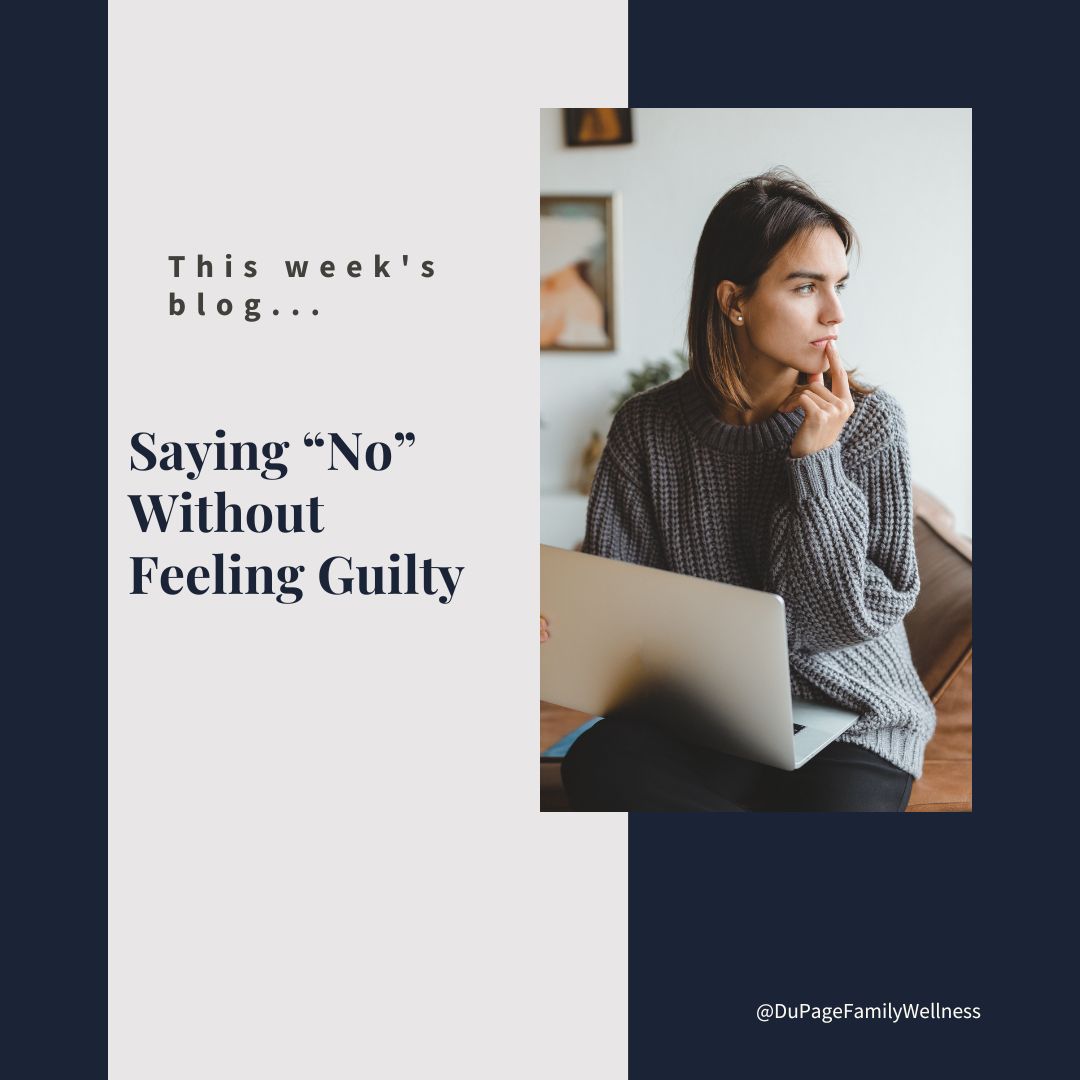-

-

 Our ancestor's survival depended on the ability to move their bodies. They moved to secure food, shelter, and safety. There was no need to go to a gym because movement was incorporated into their daily life.
Our ancestor's survival depended on the ability to move their bodies. They moved to secure food, shelter, and safety. There was no need to go to a gym because movement was incorporated into their daily life.
Hunting required fast agile movements and endurance to outlast prey. Once secured, they had to carry it to the village. Without indoor plumbing, they had to bring water to the village too.
Today we see how naturally children incorporate movement into their daily lives. They play at the park, run down the sidewalk, wiggle in their seats, spin in circles, and tip upside down.
Unstructured movement is good for their growing bodies. In fact, we would benefit if we reclaimed some of this natural movement ourselves.
Let’s learn from our ancestors and children how to include natural movement in our lives today.
Natural Movement
There was a purpose to our ancestors' movement. They were not doing repetitive movements to strengthen individual muscles; they were running, lifting, throwing, and pushing things. These movements are what the human body is designed to do.
Movements that functionally engage multiple muscle groups are more natural movements. Isolating specific muscle groups may create imbalances that can cause pain over time. We see this with overuse injuries in young athletes if they are not guided to strengthen and stretch multiple muscle groups.
Practical Ideas
Movement doesn't have to be strenuous. It could be as simple as walking to the water fountain, standing up for a phone call, or stretching in your seat. It is easy to incorporate it into your daily life if you are intentional about it
- park at the far end of the parking lot
- walk when you meet with a friend or take a call
- walk barefoot outside to engage your muscles in different ways (especially on an incline)
-
take the stairs instead of the elevator
-
carry your child instead of using a stroller
-
shop with a basket instead of a shopping cart
-
play with your kids when they are running in the yard
-
sit on the floor instead of reclining on a couch
-
dance to music around your house
Remember the Fun
Let’s change our mindset around movement. It's not just what we do in the gym and does not need to be strenuous to be beneficial. Rediscover the joy that can be found in movement by thinking about what you did as a kid. Did you like gymnastics? Maybe you can't do the flips anymore, but could you roll down a hill? Perhaps your balance beam days are over; where else could you practice your agility? If you enjoyed playing sports when you were young, a local club or class at the
Warrenville Park District might interest you.
Let me know how you include fun functional movement in your day when you come in for your next appointment. And, if you need help coming up with ways to do this we can brainstorm together.
 Take a moment to think about one of the special moments that brought you joy this summer. Were you able to be fully in the moment, or did worrisome thoughts pop into your mind? Researcher and author Brene Brown calls it “foreboding joy” when heavy thoughts crowd our joy.
Take a moment to think about one of the special moments that brought you joy this summer. Were you able to be fully in the moment, or did worrisome thoughts pop into your mind? Researcher and author Brene Brown calls it “foreboding joy” when heavy thoughts crowd our joy.
While you would think special times would bring pure happiness, Brown explains that it can also lead to negative thoughts. She says that you may experience a sense of dread that something bad will happen to interrupt the goodness.
It is a way to protect yourself from hurting so much if a tragedy strikes. It happens subconsciously, so we do not understand why we feel uneasy at a time when we think we should feel joy.
Let’s look at the issue of foreboding joy so we can embrace the happy times more fully.
A Tender Emotion
Joy is a vulnerable emotion. It opens your heart and makes you realize what is precious to you. This knowledge reminds you of what you have to lose. Fear of tragedy may flood your thoughts and you may think of the worst-case scenario. Brown calls this “rehearsing tragedy.”
She explains that we do this to dull the joy we feel so that it will prevent how much a tragedy would hurt. The subconscious thought is that you won’t feel pain as intensely if you don't feel joy. However, this “emotional armor” does not prevent pain, it just robs you of joy.
What to Do
According to Brown, practicing gratitude is a great alternative to bracing yourself for disaster. So, when you feel something beautiful, lean into it. Think about how grateful you are to know the person or have the experience.
Brown says that “there is no joy without gratitude.” Her research taught her about the importance of establishing a gratitude practice. She expected to find that joy led to gratitude, but discovered it was the other way around.
Developing a Gratitude Practice
A practice of gratitude is developing habits that help you focus on things you are thankful for. You get more benefit from focusing on small things you are really thankful for than from pretending you are grateful for larger things you feel you should be thankful for.
- Meditate on things you are grateful for each morning for 5 minutes.
- Help someone who doesn’t have the advantages you do.
- Find something to look forward to each week.
- Think about someone who has influenced your life and write them a letter.
- Pray to express thankfulness for the good things in your life.
- Choose one word that makes you feel gratitude (hope, life, family, friends, health, etc.). Write the word down and think about it throughout the day.
- Listen to a song you enjoy and take time to appreciate it.
- Practice mindful eating to appreciate the gift of food.
- Create a gratitude journal.
- For more ideas check out 40 Simple Ways To Practice Gratitude.
If you start to feel like you are doing your gratitude practice to check it off your to-do list, it may be time to switch up your gratitude practice.
We know things will not stay the same; what we enjoy may not last forever. However, there’s no need to feel the loss ahead of time. Embrace the moment and risk feeling joy.
Dr. Jamie
*Photo credit: Becci Hethcoat Photography
 Good hydration dramatically impacts your health, energy, performance, and emotional well-being. It seems like it should be easy to drink eight glasses of water a day, but many of us struggle to meet the goal.
Good hydration dramatically impacts your health, energy, performance, and emotional well-being. It seems like it should be easy to drink eight glasses of water a day, but many of us struggle to meet the goal.
Life gets busy, and the water bottle on the desk is forgotten. Only 22 percent of adults in the US get the recommended amount of water. So, what if I told you there was an easier way to stay hydrated than drinking eight glasses of water?
In their book Quench, authors Cohen and Bria describe a “newly identified phase of water that’s not quite liquid, vapor, or ice. (It is) identified by an extra hydrogen and oxygen atom, so the molecular structure is H3O2.” They call this substance gel water, and it is found in nature so there are no special products to buy.
Let's look at why hydration is so important and consider if gel water could allow us to work smarter instead of harder.
Health Impact
Few things as simple as hydration have such a profound impact on your health. Without water you starve every cell in your body, preventing them from working at their best. It is important for digestion, energy levels, blood volume, skin, and mind. Dr. Hyman explains, “Water is so essential for our brains that a loss of just 1-2% can significantly impact our cognitive function, making it harder to focus, concentrate, make decisions, or even connect with others.” Proper hydration impacts the following areas.
- Immune system - hydration boosts your immune system and can help prevent infections.
- Nutrients to cells - water helps deliver these vitamins and minerals throughout your body.
- Kidney & liver function - staying hydrated is vital in eliminating waste from your cells. This is crucial for the health of your kidneys and liver.
- Weight regulation - water boosts metabolism, increases satiation, and raises sympathetic nervous system activity.
- Brain function - adequate hydration increases sleep quality, improves mood and sharpens attention, memory, cognition, and ability to concentrate.
- Joints & skin - having enough water in your system keeps joints lubricated and skin supple.
- Negative symptoms - staying hydrated can help prevent headaches, irregular periods, and constipation. It helps regulate acid levels in the bloodstream and lowers your risk of anemia and heart attacks.
Gel Water
Gina Bria, an anthropologist studying how desert cultures survived with very little water, found out that her mother was suffering from chronic dehydration. Bria knew the Tarahumara people of Mexico used chia seeds to aid in hydration, so she instructed her mother's caregiver to add ground chia seeds to her mom’s morning orange juice. It did the trick and her mother stopped struggling with hydration.
Gel water is found in fruits, vegetables, & seeds (like chia seeds). Dr. Stacy Sims, a nutrition scientist at the University of Waikato in New Zealand and author of Roar, explains that plain water has a lower concentration of particles like glucose and sodium. As a result, it does not stay in our bodies as long as gel water, so it is not as effective for hydration. While ancient cultures didn’t know the chemistry behind this type of hydration, they used gel water to sustain themselves when water was scarce.
Hydration Tips
Small habits can make a huge difference in your hydration. Pick one to try today, then build on it over time.
- Start your day with gel water by adding citrus fruit to your water (lemon, lime, grapefruit, etc.).
- Eat lots of fruits and vegetables that are full of gel water, contain electrolytes, and are high in fiber which helps the body absorb gel water.
- Drink and cook with bone broth. It is full of both collagen and gel water.
- Mix a teaspoon of crushed chia seeds to smoothies and other drinks.
- Cook with coconut and ghee. Both are full of gel water and electrolytes.
- Add 1/16 teaspoon of table salt to every eight ounces of regular water. This slows its absorption allowing it to stay in your body longer.
We can all use more energy and focus to get through the day. Prioritizing hydration will help your body and mind function more effectively. With these new tricks, you can get a handle on your body's hydration.
Dr. Jamie
 Getting ready for school can be exciting, but it can also be overwhelming. Buying school supplies, planning breakfasts, and packing lunches are a lot of work.
Getting ready for school can be exciting, but it can also be overwhelming. Buying school supplies, planning breakfasts, and packing lunches are a lot of work.
There can also be strong emotions during the transition. Parents might not be excited about the structure and routine school requires. Kids may be anxious, making them more irritable or sensitive than usual.
While parents can’t take all the stress out of the transition, they can help ease it when they have a plan. If they can keep their stress under control, the kids will feel it. A parent’s calm demeanor can set the tone in the home.
If you have a child heading back to school, check out these ideas to help you start the year strong.
School supplies
My kids love picking out their folders and binders at the store. However, at times, it can be stressful. School supply lists have gotten long and stores can be crowded. If going to the store doesn’t sound fun, consider shopping online.
Target's School List Assist makes online shopping simple. Follow this link, put your zip code in the box, choose your child's school/grade, and a list of needed supplies will appear in your cart. You can switch things out, so your kids can still choose their styles.
Backpack
Make the straps on your child’s backpack snug so that it doesn’t create an unnatural forward posture which puts a heavier load on the neck and shoulders. Encourage them to use both straps so the body doesn’t shift to compensate.
The weight of a full backpack should be less than 10-15% of the body weight of the person carrying it, so don’t overfill it. Putting the heaviest items closest to their body will adjust the center of gravity closer to their back; this makes the backpack feel lighter. If your child starts to complain about pain, bring their backpack with them to their next visit. We can work together to find a solution.
Breakfast
Here are some great recipes to make in advance.
Another option is to grab any protein, healthy fat, and non-starchy vegetables. It makes a complete nutritious meal. Be creative, and remember that breakfast doesn’t have to look like breakfast; leftovers work just fine!
Lunch
Typical lunches have high sugar and carbohydrate levels (i.e. bread, crackers, chips, cookies, pop, juice boxes, candy, etc.). They cause a blood sugar spike followed by a sudden blood sugar crash that leaves them feeling rotten.
Instead, choose a quality protein and fat. This will help maintain energy and focus all day. Here are some ideas…
- Sliced avocado wrapped in nitrate-free lunch meat
- Breadless sandwiches
- Guacamole and veggies
- Hard-boiled eggs
- Homemade soup
- Chicken, tuna, or egg salad (made with avocado oil mayo)
- Salad (with homemade ranch dressing)
- Leftovers
Sides could include a handful of nuts, apple and nut butter, unsweetened dried fruit, Lara bars, homemade muffins, quality cheese, full-fat yogurt, unsweetened applesauce, Paleovalley beef sticks, smoked salmon, homemade fruit snacks, or coconut bombs.
Routines
New routines take time to establish. A good morning routine starts the night before, so allow enough time in the evening to prepare for the next day. This is tricky because you also want to get the kids to bed on time without the harsh words stress can bring.
Different things will work for different families. Maybe your kids can pack their lunch or you could make it while dinner cooks. Perhaps your family would benefit from having an area where backpacks and shoes are always kept.
Even with the best of planning, giving yourself plenty of time in the morning is important. It will take some stress out of your morning routine and set your kids up for a great day of learning.
Give your kids, and yourself, lots of grace during this transition. And, remember, it is tough for most of us!
Dr. Jamie
 Many of us have been conditioned by society to focus on others at the expense of ourselves. We are taught to obey our teachers and share with other kids. While we need to learn to function in a community, there must be a balance of give and take.
Many of us have been conditioned by society to focus on others at the expense of ourselves. We are taught to obey our teachers and share with other kids. While we need to learn to function in a community, there must be a balance of give and take.
There has to be a healthy place somewhere between the toddler who says "no" to everything, and the person who says "yes" to everything. When we do not have this balance, we can find ourselves overwhelmed, stressed, and depressed.
You may need to learn to say “no” without feeling guilty. Then you can make good decisions about where you spend your resources. It is the foundation for living a life that brings you fulfillment and joy.
Let’s look at some things you can do to work on it.
Practice Saying “No”
Everything new takes practice. It may help to start saying “no” to the little things when the stakes are not high. This may look like saying “no” to the clerk at the grocery store when they ask for a donation. If you want to give to the cause, you can decline this time and double up the next time you are there. As you become accustomed to this, you will develop confidence for times when it matters more.
Involve People You Trust
Let the people who make you feel safe know you are trying a new skill. Ask them to be understanding as you practice with them. Explain that it may feel different, but you need to grow in this area. To bring some humor into the situation you can ask loved ones to make outrageous requests; this gives you a light-hearted way to practice saying “no.” You could also involve them by asking them to remind you of your goals when you say “yes" to things that might not be in your best interest.
Give a Delayed Response
It can be hard to make decisions on the spot especially when someone is looking at you waiting for a response. Give yourself time to decide what you want by saying you will get back to them after you “check your schedule” or “talk with your family.” If they push you for an answer on the spot, tell them that if you have to decide now the answer will be "no."
Soften Your “No”
If an outright "no" feels too difficult, say “Maybe next time.” You can also consider offering to do an alternative activity. If asked to go to a movie you do not want to see, you could say you are not up for that but would enjoy hanging out at your house with them. Offering to help unpack is a great alternative to helping them move furniture and boxes.
Text Your Answer
It is often easiest to express yourself through text. You have time to choose your words carefully and it provides distance if they try to pressure you to change your mind. However, it is important to remember that you do not have the benefit of body language and tone. Many people say that only 7% of our communication comes from the words we say, the rest comes from body language and tone. So, read it carefully to make sure the message comes across the way you intend it to.
Remember
It is healthy to have boundaries that consider what you need; saying “no” will be necessary in establishing them. Only you can protect your time, money, and energy. It is not someone else's responsibility to do it for you. If you feel overwhelmed, stressed, and exhausted it may be a sign that you need to start saying no. Resentment is also a sign that you may be giving too much, so protect yourself and your relationships by learning this important skill. You don’t have to explain yourself; simply saying “no” is enough.
It is hard to make changes, but there are great benefits to learning to say “no.” Let me know if you are working on it.
Dr. Jamie
 It is helpful to look at how our ancestors lived as a guide for our choices today. We can learn so much from the way humans existed before modern conveniences were introduced into our lives. Doing so can help us understand our need for human connection, functional movement, and real unprocessed food.
It is helpful to look at how our ancestors lived as a guide for our choices today. We can learn so much from the way humans existed before modern conveniences were introduced into our lives. Doing so can help us understand our need for human connection, functional movement, and real unprocessed food.
Some of the ways our lives differ from our distant ancestors are obvious. We have stress from our jobs instead of the stress of surviving an animal attack. The movement we get in the gym is much different than the kind our ancestors got when they hunted game. However, some of the differences are not so clear.
Our ancestors experienced the weather very differently than we do. They were exposed to the elements and a range of temperatures daily. I am sure this was not always pleasant, but it did have some health benefits.
Let's look at how we can use extreme temperature exposure in our lives today.
Our Ancestors
We wake up in temperature-controlled homes, take warm showers, and drive to work in comfortable cars. Many of us work, live, and spend our days in buildings that maintain a steady, comfortable temperature. We may go to the pool on hot days, but we can head back inside when we have had enough.
Our ancestors did not have this luxury. They did not have a lovely air-conditioned home keeping the temperature at 70 degrees. There were no grocery stores; they had to be out in the elements to find food. Modern society does not necessitate exposure to the elements as it did for our ancestors.
Why it Matters
Our bodies have systems in place to regulate our temperature - shivering, goosebumps, sweating, changes in metabolism, etc. It’s good for our bodies to practice using these systems.
If our bodies never have to challenge these systems, they likely won’t work as effectively as if they were used regularly. I am not suggesting we put ourselves in danger (frostbite, heatstroke, etc.), but we do not want these systems getting too lax either.
Extreme temperature exposure benefits our mitochondrial function, immune system, fat storage, inflammatory levels, hormone production, cardiovascular system, blood sugar regulation, and detoxification.
Here is a great article and a scientific study with more details about hot and cold temperature exposure.
How to Experiment with Extreme Temperature Exposure
Check with your doctor if you are interested in trying this. There are many potential health benefits, but it is important to be careful. If you are suffering from any health concerns or chronic disease, it is wise to be even more cautious with this.
It is also important to listen to your body. There is a difference between being slightly uncomfortable and experiencing pain. If you begin to feel pain, you are likely pushing yourself too far. Start with small doses and less extreme temperatures; you can do harm if you jump into this too quickly.
What small step could you take to embrace extreme temperature exposures today? Play around with a few things to see what you would enjoy.
Dr. Jamie
 Our ancestor's survival depended on the ability to move their bodies. They moved to secure food, shelter, and safety. There was no need to go to a gym because movement was incorporated into their daily life.
Our ancestor's survival depended on the ability to move their bodies. They moved to secure food, shelter, and safety. There was no need to go to a gym because movement was incorporated into their daily life.

 Take a moment to think about one of the special moments that brought you joy this summer. Were you able to be fully in the moment, or did worrisome thoughts pop into your mind? Researcher and author Brene Brown calls it “foreboding joy” when heavy thoughts crowd our joy.
Take a moment to think about one of the special moments that brought you joy this summer. Were you able to be fully in the moment, or did worrisome thoughts pop into your mind? Researcher and author Brene Brown calls it “foreboding joy” when heavy thoughts crowd our joy. Good hydration dramatically impacts your health, energy, performance, and emotional well-being. It seems like it should be easy to drink eight glasses of water a day, but many of us struggle to meet the goal.
Good hydration dramatically impacts your health, energy, performance, and emotional well-being. It seems like it should be easy to drink eight glasses of water a day, but many of us struggle to meet the goal.  Getting ready for school can be exciting, but it can also be overwhelming. Buying school supplies, planning breakfasts, and packing lunches are a lot of work.
Getting ready for school can be exciting, but it can also be overwhelming. Buying school supplies, planning breakfasts, and packing lunches are a lot of work.  Many of us have been conditioned by society to focus on others at the expense of ourselves. We are taught to obey our teachers and share with other kids. While we need to learn to function in a community, there must be a balance of give and take.
Many of us have been conditioned by society to focus on others at the expense of ourselves. We are taught to obey our teachers and share with other kids. While we need to learn to function in a community, there must be a balance of give and take.  It is helpful to look at how our ancestors lived as a guide for our choices today. We can learn so much from the way humans existed before modern conveniences were introduced into our lives. Doing so can help us understand our need for human connection, functional movement, and real unprocessed food.
It is helpful to look at how our ancestors lived as a guide for our choices today. We can learn so much from the way humans existed before modern conveniences were introduced into our lives. Doing so can help us understand our need for human connection, functional movement, and real unprocessed food.